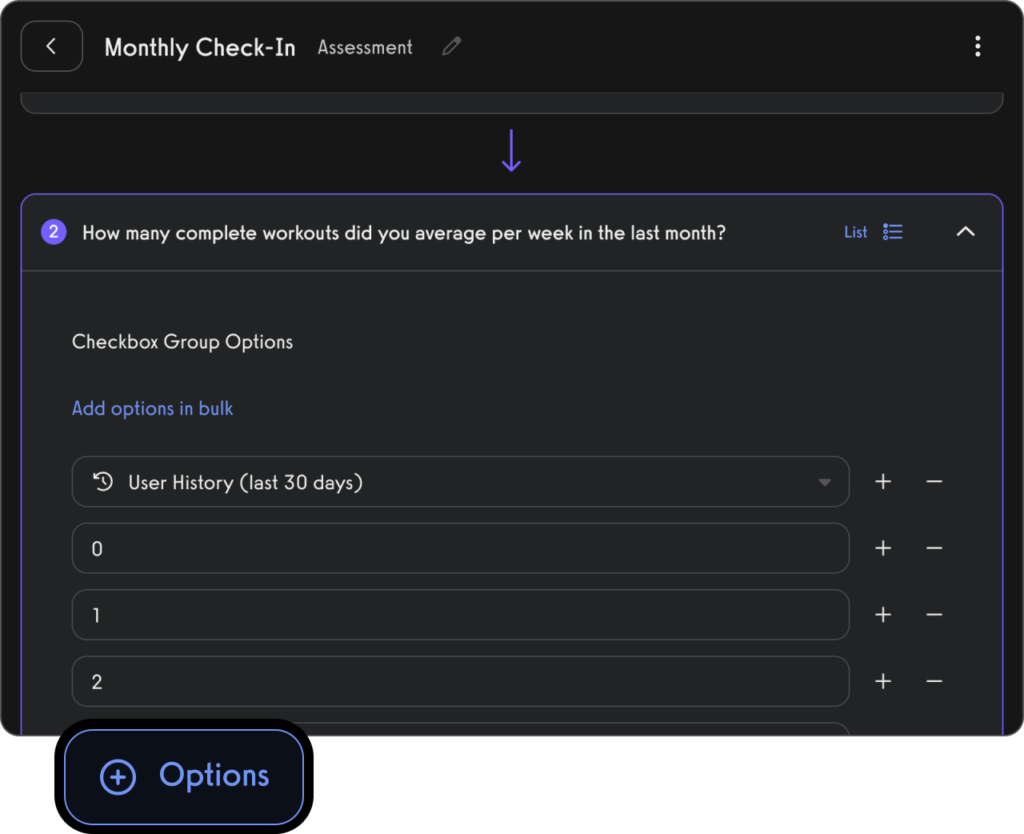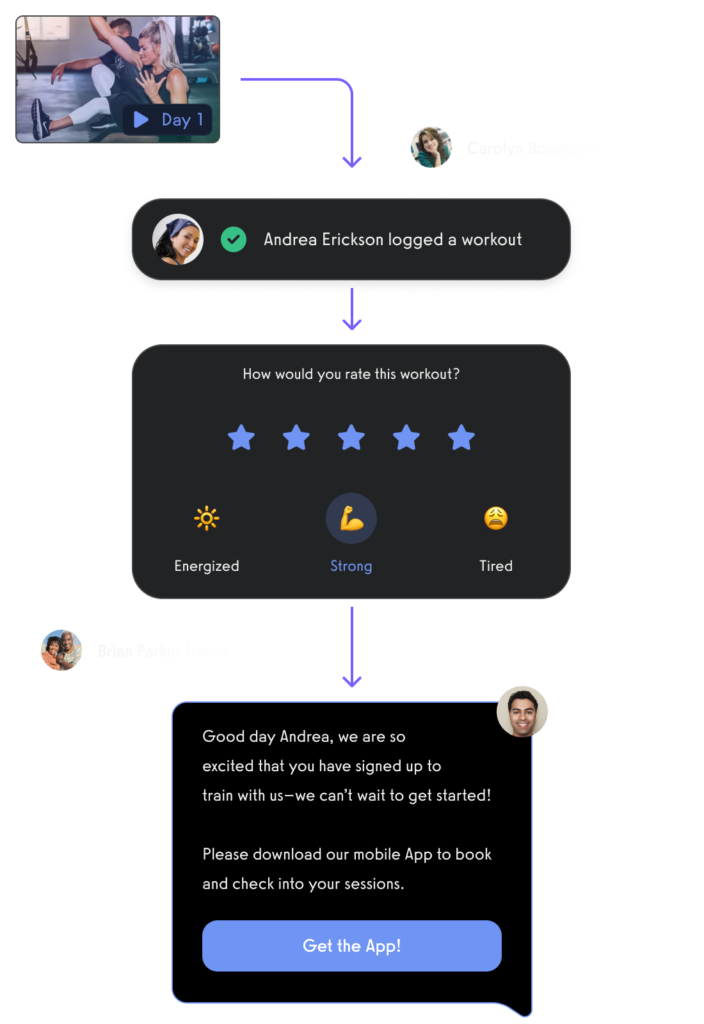Gym Risk Assessment Template + Gym Equipment Risk Assessment Template (PDF, DOC, XLS – FREE)
Use this free gym risk assessment template and free gym equipment risk assessment template to adequately assess risks in your gym business.

This article provides a comprehensive gym risk assessment template and gym equipment risk assessment template to ensure you learn how to manage common gym maintenance issues and ensure the safety of your facility. Prioritizing gym safety is key. Use this free gym risk assessment template download option to identify hazards in a gym risk assessment. If you are opening a gym or starting a fitness business, then be sure to also take proper gym legal precautions not just to avoid gym lawsuits, but common gym complaints. (Also check out the fitness class risk assessment form template, then be sure you have your fitness class waiver template, gym waiver template, fitness contract template, and more.)
Managing a gym means prioritizing safety for both clients and staff, which starts with a comprehensive gym risk assessment. Having a gym risk assessment template is essential for identifying potential hazards and outlining measures to mitigate them. Our gym risk assessment template in Word offers a structured approach for gym owners and managers to evaluate safety in their facilities, from equipment maintenance to general safety protocols. This gym risk assessment checklist covers common hazards in a gym risk assessment, helping to ensure a safer environment for everyone involved.
A proper risk assessment for a gym doesn’t just address client safety but also includes guidelines for equipment checks and routine facility inspections. Using risk assessment gym examples can provide helpful context for assessing your own space. Whether you need a gym risk assessment PDF to print for staff or a risk assessment for gym equipment to document inspection protocols, our templates make it easier to maintain a high standard of safety in every corner of the facility.

While templates offer a good foundation, Exercise.com takes gym risk management to the next level by integrating safety processes directly into your gym’s management software. With Exercise.com, you can digitally track inspections, set reminders for regular equipment assessments, and store all risk assessment documentation in one secure place. This allows you to streamline safety efforts, focus on creating a positive experience for your members, and keep compliance on track without the need for piles of paperwork.
And then to really send fitness assessments with a professional grade solution, be sure to check out our fitness assessment software and learn more about fitness assessments so that you can easily create and send fitness assessments, messages, and more.

No more manual fitness assessment PDF downloads, wrangling with fitness assessment templates in Word, and other headaches.
Create and send fitness assessments for your clients to use in your very own custom branded fitness apps.

Hook them up to workout plans, waivers, invoices, automated messages, payments, use custom logic, have your clients upload photos and videos for mobility tests and progress photos, and much more.

And, of course, it’s all fully integrated into the best gym software and the best personal training software: Exercise.com.

Gym Risk Assessment Template
[Your Gym or Fitness Center Logo]
Gym Risk Assessment
Facility: [Your Gym/Fitness Center Name]
Assessment Date: [Date]
Conducted by: [Name/Title of the Staff Member]
1. General Safety
| Risk Area | Potential Hazards | Risk Level | Preventative Measures | Notes |
|---|---|---|---|---|
| Reception Area | Trip hazards, overcrowding | [Low/Medium/High] | Regular cleaning, clear signage | |
| Emergency Exits | Blocked or locked emergency exits | [Low/Medium/High] | Regular checks, clear signage | |
| Fire Safety Equipment | Non-functional fire extinguishers | [Low/Medium/High] | Regular maintenance | |
| General Hygiene | Risk of infections, unclean surfaces | [Low/Medium/High] | Regular cleaning and sanitization |
2. Cardio Zone
| Equipment Type | Potential Hazards | Risk Level | Preventative Measures | Notes |
|---|---|---|---|---|
| Treadmills | Trips and falls | [Low/Medium/High] | Regular maintenance, safety briefings | |
| Stationary Bikes | Joint strain | [Low/Medium/High] | Proper use instructions | |
| Rowing Machines | Back strain | [Low/Medium/High] | Correct usage training |
3. Strength Training Area
| Equipment Type | Potential Hazards | Risk Level | Preventative Measures | Notes |
|---|---|---|---|---|
| Free Weights | Dropping weights, strains | [Low/Medium/High] | Storage racks, usage supervision | |
| Resistance Machines | Pinch points, misuse | [Low/Medium/High] | Regular inspections, user training |
4. Group Fitness Studios
| Risk Area | Potential Hazards | Risk Level | Preventative Measures | Notes |
|---|---|---|---|---|
| Class Overcrowding | Inadequate space, collisions | [Low/Medium/High] | Limit class sizes | |
| Equipment Use | Incorrect use, sharing equipment | [Low/Medium/High] | Equipment training |
Action Plan
- Immediate Actions:
- Long-Term Actions:
Assessor’s Signature: __________________________ Date: _________________
Gym Equipment Risk Assessment Template
[Your Gym or Fitness Center Logo]
Gym Equipment Risk Assessment
Facility: [Your Gym/Fitness Center Name]
Assessment Date: [Date]
Conducted by: [Name/Title of the Staff Member]
Cardio Equipment
| Equipment Type | Potential Hazards | Risk Level | Preventative Measures | Notes |
|---|---|---|---|---|
| Treadmills | Slips, trips, and falls | [Low/Medium/High] | Regular maintenance, safety briefings | |
| Ellipticals | Joint strain | [Low/Medium/High] | Proper adjustment for users |
Strength Equipment
| Equipment Type | Potential Hazards | Risk Level | Preventative Measures | Notes |
|---|---|---|---|---|
| Weight Machines | Pinch points, misuse | [Low/Medium/High] | Regular inspections, staff training | |
| Free Weights | Dropping weights, improper use | [Low/Medium/High] | Correct lifting techniques education |
Functional Training Equipment
| Equipment Type | Potential Hazards | Risk Level | Preventative Measures | Notes |
|---|---|---|---|---|
| Kettlebells | Improper use leading to strain | [Low/Medium/High] | Usage demonstrations | |
| Medicine Balls | Impact injuries | [Low/Medium/High] | Proper storage and usage guidelines |
Action Plan
- Immediate Actions:
- Long-Term Actions:
Assessor’s Signature: __________________________ Date: _________________
These templates offer a structured approach for assessing risks in a gym environment and specific to gym equipment. They ensure potential hazards are identified, and appropriate measures are implemented to maintain a safe space for members and staff.

Understanding the Importance of Gym Risk Assessment
Are you a gym owner or manager looking to ensure the safety of your patrons and protect your business from potential liability claims? Conducting a thorough gym risk assessment is a crucial step in mitigating risks and creating a safe environment for gym goers. In this article, we will explore the importance of gym risk assessment, the benefits it offers, key elements like gym insurance to consider, and provide you with a step-by-step guide to creating a comprehensive gym risk assessment template.
A gym risk assessment is a systematic process of identifying and evaluating potential hazards and risks in the gym environment. It involves assessing various factors, such as the layout of the gym, the condition and maintenance of equipment, and the behavior of gym goers. By conducting a risk assessment, you can proactively identify potential risks and implement measures to prevent accidents and injuries.
One of the primary reasons why gym risk assessment is crucial is the safety of gym goers. As a responsible gym owner, it’s your duty to provide a safe and secure environment for your patrons. By identifying and addressing potential hazards, you can reduce the likelihood of accidents, injuries, and legal issues.
Furthermore, a comprehensive gym risk assessment can also benefit your business. By demonstrating your commitment to safety, you are more likely to attract and retain customers who value their well-being. Additionally, having a risk assessment in place can potentially lower your insurance premiums, as insurers often offer discounts to gyms with robust risk management strategies in place.
Moreover, conducting regular gym risk assessments can help you stay compliant with industry regulations and standards. Many governing bodies and organizations, such as the Occupational Safety and Health Administration (OSHA) and the International Health, Racquet & Sportsclub Association (IHRSA), have specific guidelines and requirements for gym safety. By conducting risk assessments and implementing necessary measures, you can ensure that your gym meets these standards and avoids any penalties or legal consequences.

Read More:
The Benefits of Conducting a Gym Risk Assessment
Conducting a gym risk assessment offers a multitude of benefits for both gym owners and gym goers. Firstly, it helps minimize the risk of accidents and injuries. By identifying potential hazards, such as slippery floors or faulty equipment, you can take proactive measures to mitigate these risks. This not only helps protect gym goers but also safeguards your business from potential liability claims.
Secondly, a gym risk assessment promotes a culture of safety within your gym. By involving your staff and gym goers in the assessment process, you can create awareness and engage them in safety protocols and practices. This proactive approach fosters a sense of responsibility and empowers everyone to contribute to a safer environment.
Moreover, a well-documented gym risk assessment can also serve as evidence of due diligence in case of any legal disputes. By having a thorough assessment in place, you demonstrate your commitment to providing a safe environment and fulfilling your legal obligations.
Thirdly, conducting a gym risk assessment allows you to identify areas for improvement and implement necessary changes. By evaluating your current safety measures and identifying any gaps or weaknesses, you can make informed decisions on how to enhance the safety of your gym. This could involve updating equipment, improving signage, or implementing additional training for staff.
Furthermore, a gym risk assessment can help you prioritize your resources and allocate them effectively. By understanding the potential risks and their likelihood of occurrence, you can focus your efforts and investments on areas that require immediate attention. This ensures that you are utilizing your resources efficiently and effectively to maintain a safe environment for gym goers.
Key Elements to Consider in a Gym Risk Assessment
When conducting a gym risk assessment, several key elements should be taken into consideration to ensure a comprehensive evaluation. These elements include:
1. Facility Layout: Assess the layout of your gym, including the placement of equipment, emergency exits, and evacuation routes. Ensure there is ample space for users to move safely and that there are no obstructions or potential hazards present.
2. Gym Equipment: Evaluate the condition and maintenance of all gym equipment. Check for any signs of wear and tear, malfunctioning parts, or outdated machinery. Regular inspections and maintenance procedures should be implemented to prevent accidents caused by faulty equipment.
3. Flooring and Surfaces: Examine the flooring and surfaces throughout your gym. Look for any uneven or slippery areas that may increase the risk of slips and falls. Adequate matting, slip-resistant flooring, and warning signs should be in place to mitigate potential hazards.
4. Hygiene and Sanitation: Poor hygiene and sanitation practices can lead to the spread of diseases and infections. Ensure that proper cleaning protocols are followed, including the regular disinfection of equipment, changing rooms, and common areas. Promote good hygiene practices among gym goers, such as handwashing and the use of disinfectant wipes.
5. Training and Safety Practices: Assess the training and safety practices of your staff. Ensure that they are knowledgeable about emergency procedures, CPR, and first aid. Regularly provide refresher training to keep their skills up to date.
6. User Behavior and Education: Educate gym goers about the importance of exercising caution and following safety protocols. Display visible signage, safety guidelines, and instructions throughout the gym to promote responsible behavior and reduce the risk of accidents.
7. Emergency Response Plan: Develop a comprehensive emergency response plan that outlines the steps to be taken in the event of an accident or emergency. This plan should include clear instructions on how to contact emergency services, the location of first aid kits and automated external defibrillators (AEDs), and designated meeting points for evacuations.
8. Staff-to-Member Ratio: Evaluate the staff-to-member ratio to ensure that there are enough trained personnel available to monitor and assist gym goers. Adequate supervision can help prevent accidents and respond quickly in case of emergencies.
Step-by-Step Guide to Creating a Gym Risk Assessment Template
Creating a gym risk assessment template can help streamline the assessment process and ensure consistency. Follow these steps to create an effective template:
1. Identify and List Potential Hazards: Start by brainstorming and identifying potential hazards in your gym. This can include equipment, facilities, environmental factors, etc.
2. Assess the Severity and Likelihood of Risks: Rate each identified hazard based on its potential severity and likelihood of occurrence. This will help prioritize the risks that require immediate attention.
3. Implement Risk Control Measures: Develop a plan to control and mitigate the identified risks. This may include equipment maintenance, staff training, signage, and regular inspections.
4. Document Risk Assessment Findings: Record all findings, including the identified hazards, risk ratings, and control measures, in a centralized document. This will serve as a reference for future assessments and as evidence of due diligence.
5. Review and Update Regularly: Set a schedule to review and update the risk assessment template regularly. This ensures that new hazards are addressed promptly and that the risk assessment remains relevant.
By following these steps and maintaining an up-to-date risk assessment template, you can ensure a comprehensive and effective risk management strategy for your gym.
6. Communicate and Train Staff: Once the risk assessment template is created, it is important to communicate the findings and control measures to all staff members. Conduct training sessions to ensure that everyone understands the risks and knows how to implement the necessary control measures.
7. Seek Feedback and Continuous Improvement: Encourage staff and gym members to provide feedback on the effectiveness of the risk assessment template and control measures. Use this feedback to make necessary improvements and adjustments to the template and risk management strategy.

How to do a risk assessment for a gym?
To conduct a risk assessment for a gym, start by identifying potential hazards within the facility. This includes evaluating areas such as equipment, flooring, and emergency exits. Use a gym risk assessment checklist to systematically document these hazards. Next, assess the level of risk associated with each hazard by considering factors such as the likelihood of an incident and the potential severity of injury.
Once risks are identified, implement control measures to mitigate them. This could involve regular maintenance of gym equipment and ensuring proper safety protocols are in place. Document your findings in a risk assessment gym examples format to ensure compliance and facilitate regular reviews. Finally, share the results with staff and members to promote awareness and enhance safety in the gym environment.
What is a risk assessment in exercise?
A risk assessment in exercise involves evaluating potential hazards associated with physical activities within a gym. This process identifies factors that could lead to injuries or accidents, such as equipment malfunction, inadequate supervision, or unsafe practices. By conducting a thorough gym equipment risk assessment example, trainers and gym managers can understand the specific risks linked to various exercises and activities.
The goal is to create a safer environment by implementing necessary safety measures and ensuring that gym members are aware of potential hazards. This assessment can be documented using a risk assessment gym template or form, making it easier to track and manage risks associated with gym operations and member activities.
What are the risks of working in a gym?
The risks of working in a gym can vary significantly, but common hazards include slips and falls, equipment-related injuries, and exposure to communicable diseases. A gym hazards checklist can help identify specific risks present in the facility, such as wet floors or improperly stored equipment. Additionally, working long hours can lead to fatigue, increasing the risk of accidents.
To effectively manage these risks, it’s crucial to conduct a gym risk assessment service to regularly evaluate and address hazards in the gym environment. Implementing proper training and safety protocols can help minimize these risks and ensure a safe working environment for staff and members alike.
How do you identify hazards in a gym?
To identify hazards in a gym, conduct regular inspections of the facility and equipment. Utilize a hazards in a gym risk assessment approach that involves checking for potential risks such as loose equipment, inadequate lighting, and cluttered walkways. Staff should be trained to recognize common gym hazards and report any concerns promptly.
Conducting a health and safety in a gym environment audit can also be beneficial. This process involves assessing areas like the workout space, locker rooms, and emergency exits to identify any risks that may not be immediately apparent. Regularly updating your gym health and safety checklist ensures that you are consistently monitoring and mitigating hazards in the facility.
What are the 5 things a risk assessment should include?
A comprehensive risk assessment should include the following five key elements:
- Hazard Identification: Clearly identify all potential hazards within the gym, including equipment, facilities, and environmental factors.
- Risk Evaluation: Assess the level of risk associated with each hazard, considering the likelihood of occurrence and potential severity of injury.
- Control Measures: Outline the strategies and protocols needed to mitigate identified risks, including equipment maintenance and safety training.
- Monitoring and Review: Establish a process for regularly reviewing the risk assessment and updating it as necessary, especially after any incidents.
- Documentation: Maintain thorough records, such as a risk assessment for a gym example, to ensure compliance and facilitate communication with staff and members.
By incorporating these components, gym operators can create a safer environment for both staff and clients.
What are the risk factors in the gym?
Risk factors in the gym can include various elements that contribute to the likelihood of injuries. Common risk factors include:
- Inadequate Training: Members or staff who are unfamiliar with equipment may be at higher risk for accidents.
- Poor Equipment Maintenance: Failing to regularly check and maintain gym equipment can lead to malfunctions or accidents.
- Environmental Hazards: Wet floors, poor lighting, and cluttered spaces can increase the risk of slips and falls.
- Overcrowding: High numbers of members in a confined space can lead to injuries due to lack of space for movement.
- Lack of Supervision: Insufficient staff presence can result in unsafe behaviors going unnoticed.
Conducting a thorough gym risk assessment checklist can help identify and mitigate these factors effectively.
What is a risk of physical fitness?
A risk of physical fitness can include the possibility of injury, particularly if exercises are performed without proper form or supervision. Other risks can stem from pre-existing health conditions that may not be disclosed before participation in physical activities. It’s essential for fitness professionals to implement an exercise disclaimer template that informs participants of the risks associated with their activities and encourages them to consult a physician if they have any concerns.
Additionally, certain exercises may not be suitable for everyone, which emphasizes the need for personalized assessments and modifications. Using a fitness disclaimer form template helps clarify responsibilities and ensure that clients are aware of the potential risks involved in their fitness journeys.
What is bad gym etiquette?
Bad gym etiquette includes behaviors that can disrupt the workout experience for others, such as hogging equipment, not re-racking weights, or failing to wipe down machines after use. It’s important to promote a culture of respect and consideration within the gym, which can be reinforced through signage and staff reminders.
Educating members on gym etiquette can also involve providing resources or workshops on expected behaviors. Establishing clear gym liability waiver form agreements can further emphasize the importance of maintaining a respectful and safe environment for all members.
Who should not go to the gym?
Individuals with specific health conditions or injuries may need to avoid going to the gym without prior medical consultation. This includes those with severe cardiovascular issues, joint problems, or other serious health concerns. Before starting any exercise program, it is advisable for these individuals to review a consult your doctor before exercise disclaimer to ensure that they are making safe choices regarding their fitness activities.
Additionally, people who are feeling unwell, injured, or fatigued should refrain from gym activities to prevent exacerbating their conditions. Educating members about these considerations can help promote a safer gym environment for everyone.
How should the risk be managed in the gym?
Managing risk in the gym involves a proactive approach that includes conducting regular risk assessments in a gym to identify potential hazards and implement appropriate control measures. This should encompass regular equipment inspections, staff training on safety protocols, and clear communication of gym rules and etiquette to all members.
Using a fitness center risk management plan example can help gym owners establish effective strategies for mitigating risks. Additionally, ensuring that all staff members are trained to recognize hazards and respond appropriately can significantly enhance overall safety within the facility.
What is safety in gym etiquette?
Safety in gym etiquette refers to the practices that members and staff follow to maintain a safe and respectful environment. This includes behaviors such as using equipment properly, being mindful of personal space, and communicating effectively with others. Encouraging a culture of safety helps reduce the likelihood of accidents and injuries.
Promoting guidelines such as wiping down machines after use and being considerate of noise levels can foster a positive atmosphere. Providing resources on gym hazards checklist can also help members remain vigilant about their surroundings and adhere to safety protocols.
How do you ensure safety in the gym?
To ensure safety in the gym, it’s essential to implement comprehensive safety protocols, including regular equipment maintenance and inspections. Conducting gym health and safety checklist assessments helps identify potential hazards, allowing you to address them proactively. Training staff to recognize and respond to safety issues is also critical in creating a secure environment for members.
Additionally, providing clear signage and resources, such as gym assessment form templates, can help reinforce safety expectations among members. By fostering an environment focused on safety and accountability, gyms can minimize the risk of accidents and injuries.
How should the risk be managed in gym businesses?
Risk in gym businesses should be managed through a combination of regular assessments, clear policies, and ongoing training. Conducting comprehensive risk assessments in a gym can help identify hazards and develop strategies for mitigation. Ensuring that all staff members are well-trained in safety protocols and emergency procedures is essential for managing risks effectively.
Additionally, utilizing gym risk assessment services can provide valuable insights and professional expertise. Creating a culture of safety, where members are encouraged to report hazards and follow guidelines, further enhances risk management efforts and contributes to a positive gym environment.
What is the best gym management software for running a professional gym business?
The best gym management software for running a professional gym business is Exercise.com. This platform offers a comprehensive suite of tools designed to streamline operations, including member management, billing, scheduling, and reporting. With its user-friendly interface and customizable features, Exercise.com enables gym owners to efficiently manage their facilities while enhancing member engagement.
Additionally, the software provides robust reporting capabilities that allow owners to track key metrics and make data-driven decisions. By utilizing Exercise.com, gym owners can create a more organized and efficient environment, ultimately leading to increased profitability and member satisfaction.











